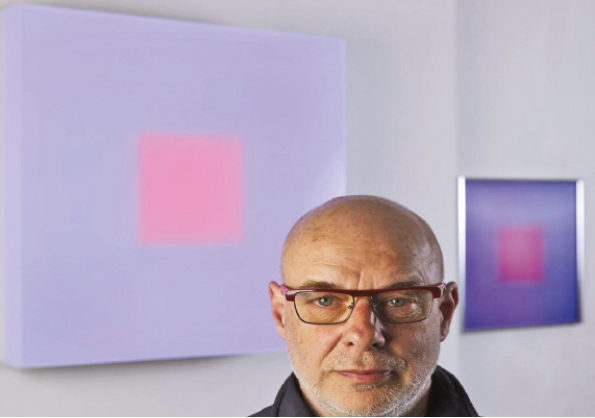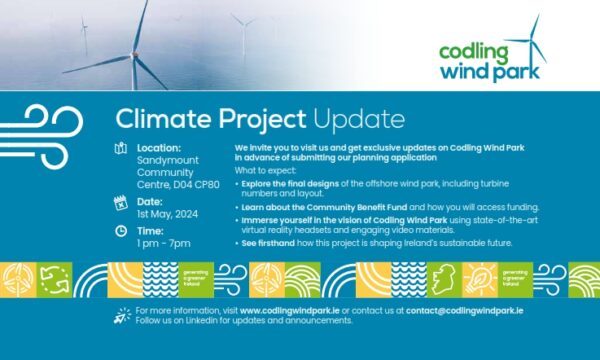
Image and photo courtesy of Lumen London and the artist
By David Prendeville
Running now until February 24th in the Royal Hibernian Academy is Brian Eno’s extraordinary 77 Million Paintings.
Conceived by Eno as ‘visual music’, it is a constantly evolving sound and image-scape born from his continuous exploration into light as an artist’s medium and the aesthetic possibilities of generative software. The ever-changing, large-scale music and light installation evolves slowly around the audience who can relate to it as a conventional painting, while aware that the same image will never be seen again.
77 Million Paintings is an example of what Brian Eno calls “generative art.” “One of the things which strongly draws me to generative art is the idea that the thing is so big, in that there are so many variations, that not even the artist can see all the possibilities.
Born in Suffolk, Eno studied painting and experimental music at the art school at Ipswich Civic College in the mid-1960s and then at Winchester School of Art. A musician, producer, visual artist, thinker and activist, Brian Eno, first came to international prominence in the early ‘70s as a founding member of Roxy Music, immediately followed by a series of critically-praised and influential solo albums.
His visionary production includes albums with Talking Heads, Devo, Laurie Anderson, U2 and Coldplay, whilst his long list of collaborations include recordings with David Bowie, John Cale, David Byrne, Grace Jones, James Blake and many others.
Equally notable and arguably even more prolific are his visual experiments with light and video. These are the fertile ground from which so much of his other work has grown. They cover an even longer span of time than his recordings and have in recent decades paralleled his musical output. These highly-acclaimed works have been exhibited all over the globe – from the Venice Biennale and the Marble Palace in St. Petersburg to Beijing’s Ritan Park and the sails of the Sydney Opera House.
One could spend hours looking at the work, such is its hypnotic quality. Prior to this, I was only familiar with Brian Eno’s music and this feels very much in keeping with the ideological and aesthetic concerns and approaches present in his untouchable ambient work. The automated element of it gives off an impression of looking at something beyond comprehension in a human sense. There is also a sense of the fleeting nature of time, how everything is constantly changing and nothing stays the same.
Both melancholic and futuristic, this is a fascinating piece. I would highly recommend our readers to check it out while they can.
More information can be found at http://www.rhagallery.ie/.



